Words by Pat Carroll.
Some of the most powerful music I have heard has come from the mind of Tim Hecker.
When you listen to the differences between his 2001 record, ‘Haunt Me, Haunt Me Do It Again’, and his latest record, “No Highs” (2023), you hear an artist who has progressed and developed in such nuanced, complex, and unique ways. When you really sit with his music, it reveals a very idiosyncratic take on beauty, and stands as a demonstration of the importance of challenging art.
His music is almost entirely void of percussion or any outright sense of groove, which has led to it sometimes being scooped up in discussions of ‘ambient music’. But original ambient music is designed to be ‘as ignorable as it is interesting’, and Hecker’s music is anything but ignorable. It plays with timbre and texture in such interesting ways that produce structures that feel timeless–detached from any trending techniques of a period or stylistic references. It is an original, personal musical language.
Hecker was recently in Australia, performing at Phoenix Central Park in Sydney, before heading up to Brisbane to perform at the 2024 ΩHM Festival of Other Music. He was joined on the Friday night’s program by fellow Canadian experimental electronic musician Loscil, who was supported by Brisbane ensemble Topology.
I’ve had questions floating around my mind ever since I first started listening to Hecker’s music; a curiosity about how he approaches the creation of his work, some of the tools that he uses, and very specific things in his music that I’ve just wondered, Why does he do that? What’s the thinking behind it? So it was a special experience to hear him reveal some interesting and valuable insights into his creative process, the state of art, his approaches to performance, and some compositional techniques.
PC: So first up, in the past you’ve described your music in this really cool term of “a snapshot of a time” when you’ve been writing it. And I wonder, are you someone who is constantly composing and then at some point looks at all the material and consolidates that into a record? Or is it more of a situation of you only really write when you have something to say, and then you’re properly focusing on a record?
TH: I think that it’s like both, maybe there are periods where I’ll go into a writing phase where I just show up and just record something every day and just try to make music. Having said that, I’m not like a totally 365 workhorse where I’m doing an insane amount of recording. There are definitely periods where I drop off. Like right now I’m learning Cubase again. I’m just like, ‘Should I use this stupid software instead of the other one I’m using?’ and I’m not writing any music. Or, one of the great ones that has taken so many composers’ careers is like, ‘Should I use modular synthesisers?’ And that takes so many people’s careers away. And you’re not writing music at all. And so I do that. It’s probably like half-half where I’m working and I’m just making work. But you also have to be inspired. And you can’t just write music when you’re inspired but also when you’re not and I think that the weird thing is it’s often the times when you’re not really so sure about what you’re doing in that moment becomes something that’s special and so I think half of being a good musician is being able to edit and step back from your own work and look at it from a bit of distance and partiality afterwards.
PC: Yeah. Is that sort of how you’ve always worked or has it changed a bunch over your career?
TH: I mean, the gist of it’s still the same. I think that I’m still excited about trying to make weird sounds and something that excites me, and, like I imagine music could be like this, or, I’m not rewriting the book in any means of Western music expression, but there’s just little corners of the world I feel like haven’t been expressed or explored, and I still am excited about that, mostly. There are periods where it’s bleak and I’m not, but I think the big picture I still am.
PC: You’ve actually touched on the idea of different approaches to Western music; not necessarily reinventing the wheel or anything. But one thing that I love about your music, and in a lot of experimental electronic music, is how timbre has been put in centre stage a lot more than in the past, with traditional harmony or rhythmic elements. For you, is that an obvious choice that you’re making consciously, or is it something that you think comes out of using DSP so heavily?
TH: I think of timbre and I think of texture almost like fabric or something like that. And I think that yeah, DSP and digital audio naturally gives you something really special with that–like it’s offering the richness of orchestral, organic, pillows of sound in the way that you can do with computers and synthesis, and I think that that’s the kind of obvious thing about what it brings to music. I mean, it’s granular synthesis, it’s other forms of high computing synthesis that you just couldn’t make with your guitar centre synthesiser, you know?
PC: Yeah, awesome. You mentioned it there, and you’ve also done so in the past when you said that ‘No Highs’ was a very “black and white album”, and you talk about digital audio as this substance or material. It’s almost like I hear that as you having a very visual side, or a visual element that you’re seeing or maybe recreating in your music. Is that the case or not?
TH: Yeah, I’ve been doing it for years, but I’m really self-conscious to avoid making references to visual art because I’m also tired of that period of visual arts that’s not as inspiring for me. But I think about some painters or sculptors have had their grayscale phase, you know, where they do these beautiful coloured canvases and then all of a sudden they do a bunch of grey paintings with like mirrors that are super stripped down and don’t have that transcendent spiritual aspect or there’s something slightly bleak about it. And I feel like, coming out of the pandemic, it felt right to explore something reductionist and not as over the top. When you have the option to add eight thousand layers of depth and richness to it, like why? Why do that? I don’t know. But I also obviously love rich ornate, confusing music so I think it was just a period of getting something finished and making something really stripped back and I mean I don’t know if that succeeded or not but that was how I felt at the time.
PC: On this idea of bleakness, there’s something that I hear a lot in your music: this instability of pitch and especially like glissandi – of things sliding around as opposed to just chords. And I find that’s a awesome way that you create tension. Like in ‘Monotony’ you have these convergences of pitch, and they get just close enough that they’re almost touching, and then they pass each other more. I hear that a lot in Johan Johansson’s score for Sicario and Ben Frost’s one for Dark, and also in your score for Infinity Pool. Where does that come from for you – that approach to pitch?
TH: I think I came out of- like a high schooler, listening to My Bloody Valentine using the whammy bar, or chords that just melted by pushing down on the bar of metal. And it’s always been with me: the 12 steps felt rigid and fascistic and I find doing alternate tunings or just intonation almost too academic and tedious, and so I just like pitch instability and I like things that dissolve. And it’s like clouds forming and reforming. I mean, it’s a really great question and it’s something I’m really obsessed with. And that’s one thing – there are keyboards now that do different forms of expression where you can pitch bend every note. There’s a really wide open field with that kind of way of writing music now. I feel like that’s one of the more inspiring parts – of just writing chords and having three notes in a chord bend in different directions. Like, fantastic. Obviously, the orchestra could do that forever, but the tools I’ve been using haven’t been able to. And yeah, I love it in short.
PC: Yeah, because I remember also in “No Highs,” you approach rhythm that same way. It’s not rigid and to the grid or anything. I forgot which piece it’s in, but there’s a chord that’s sort of strummed, and then you slowly, slowly slow down the strumming of it. So, there’s not this fixed rhythm. And I just love that. Because yeah, we’re living in an age where it’s like, ‘here’s your DAW, here’s the grid and stick to it’ sort of thing, and as soon as you take away that grid, things just open up. And I really hear that a lot in your music.
TH: Yeah. In a nutshell, modern music and maybe part of why it’s suffering, not just to blame Spotify and all the other aspects, even the withering of journalistic platforms, is the grid and the nature of everything having a click track, and live bands having these earpieces with this click metronome that’s ostensibly like this dead robot driving music. And the more that you can turn off all these, I would say cages, the more liberated music becomes, and more alive it becomes again. Because there’s something plodding about just having a kind of fixed rhythm. I mean, there’s something obviously hypnotic and it’s the basis of dance music, but even minimalist pulse music had a kind of instability or the opportunity to glide up and down in terms of richness, and the way I use that is by using software like Max MSP, that I intentionally leave things in different time relationships so that they’re not locked together.
PC: Yeah, awesome. This nicely ties into what I want to ask about your approach to live performance. Does your live set-up that you’re going to be doing over in Australia allow for this sort of freedom that is almost like improvisation? Or is it fixed in any way with pre-recorded materials?
TH: I mean, there’s definitely chunks of stems that are able to be mixed live and resampled on the spot, and keyboard inputs and there’s a lot of feedback that goes into it, so there’s the opportunity to follow somewhat of guardrails if you want but that’s really the most boring approach, and I tend to just resample and resample till it mutates into something amusing for myself at that time. I do follow songs that have some material in it, but the way I kind of setup is like, there’s a lot of room to take the music wherever it feels right, you know?
PC: Yeah, that’s actually interesting because I know in club culture and DJ cultures, there’s this big audience-performer feedback going on. And that’s really influencing the performance. Is there a level of feedback that you’re looking for with your sets?
TH: Do you mean like DJs, or compositionally with live techno?
PC: Like DJ sets; how DJs adapt the sets depending on the crowd–what the crowd is doing.
TH: I would say that kind of a setup, that’s more like a journey. I would say that I do what feels right for me in that space, but I’m not trying to like.. ascend together. I think that happens, but it’s not really like David Guetta or something at Tomorrowland, you know? That’s a tough one. I would say I’m a bit more indifferent but I just try to make the music that feels right for me in that space, and there’s always going to be like 20 per cent of the people are going to hate it, and you need some ratio like that. I think you just can’t make everybody happy, and so you’ve got to do what feels right for yourself and hopefully, 80% go along for the ride. Sorry, in terms of delusional or euphoric mass psychosis, I don’t–there are definitely occasionally people fainting or passing out or dropping beer glasses, but that doesn’t happen that often.
PC: It’s interesting. I’m a massive fan of Ari Aster’s movies and also I was a massive fan of ‘Infinity Pool’ and especially how it approaches these taboo and challenging elements of art almost unapologetically. I feel like that’s why I love ‘Infinity Pool’ so much, and I feel like your music has that element: there’s this not shying away from challenging art. Do you agree with that, and is that something that you’re pushing with your music?
TH: I think for sure. I mean, art and culture are so tepid right now. It’s so safe, especially in visual culture, talking about film. It’s so hard in an industry that’s fixated on sequels, and comic book franchises, that there’s just not as much brave work as much maybe as there used to be. I think that’s pretty empirically fair to say and I’m drawn towards things that are interesting and feel like there’s something raw about it. Yeah, I’m drawn towards that for sure.
PC: Awesome. Just one last question. In terms of your future projects, are you someone who knows the type of music that you want to be making next? Are you working towards or have a list of records that you want to create, or does it just sort of happen and you’re then taking stock?
TH: I would say I have a kind of list in my head, but not really. I kind of just make music, and it’s like two steps past what I did last time, and it’s not always going to be the same but it might be the same – I don’t know, that’s a tough question. I have this consortium of failed records that I haven’t made or things I haven’t quite done so I keep returning to it. Like you talked about glissandi a lot and tempo instability and those are things I’m still– I feel I haven’t really gone hard enough in that direction. I’ve wanted to make a guitar record – like I haven’t done that really, I’d say suitably. That kind of evolves with time and coalesces in the midst of the work. I would say for me personally, I don’t map it out like some grant proposal three-year Microsoft Excel spreadsheet kind of vibe. It’s not me.
About ΩHM Festival of Other Music:
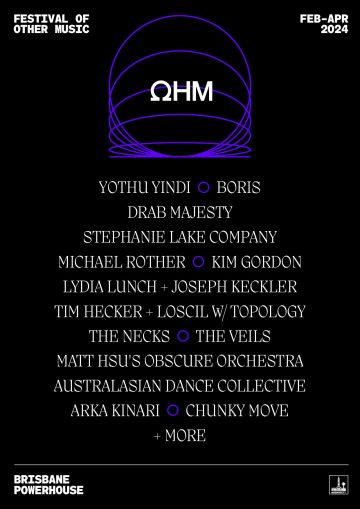
Curated by Brisbane Powerhouse Arts Program Director Brad Spolding and celebrated composer Lawrence English, the festival’s 2024 edition promises to captivate audiences with a provocative program of cutting-edge music, boundary-pushing performances and pioneering art.
Check out more info and tickets here.
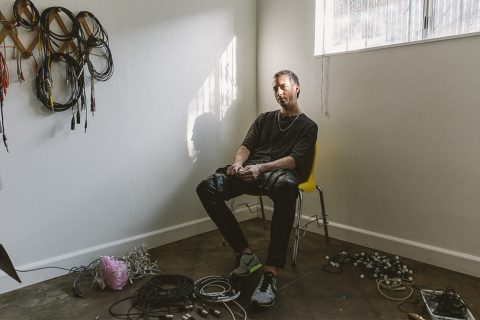
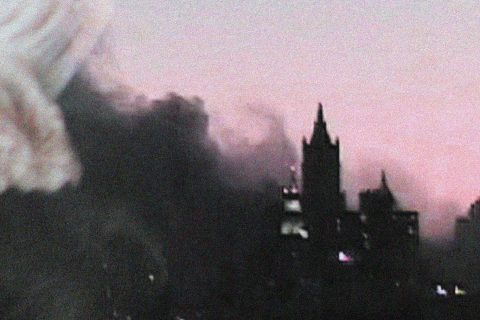
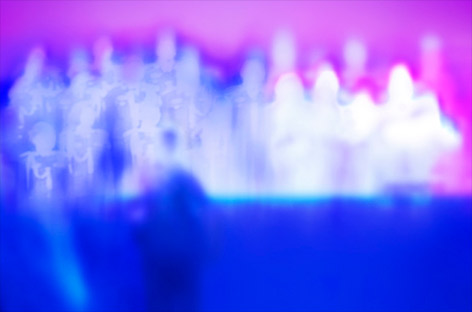
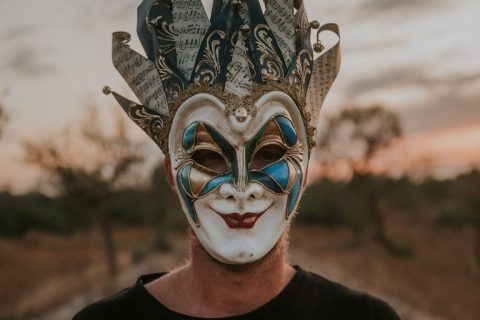
Comments